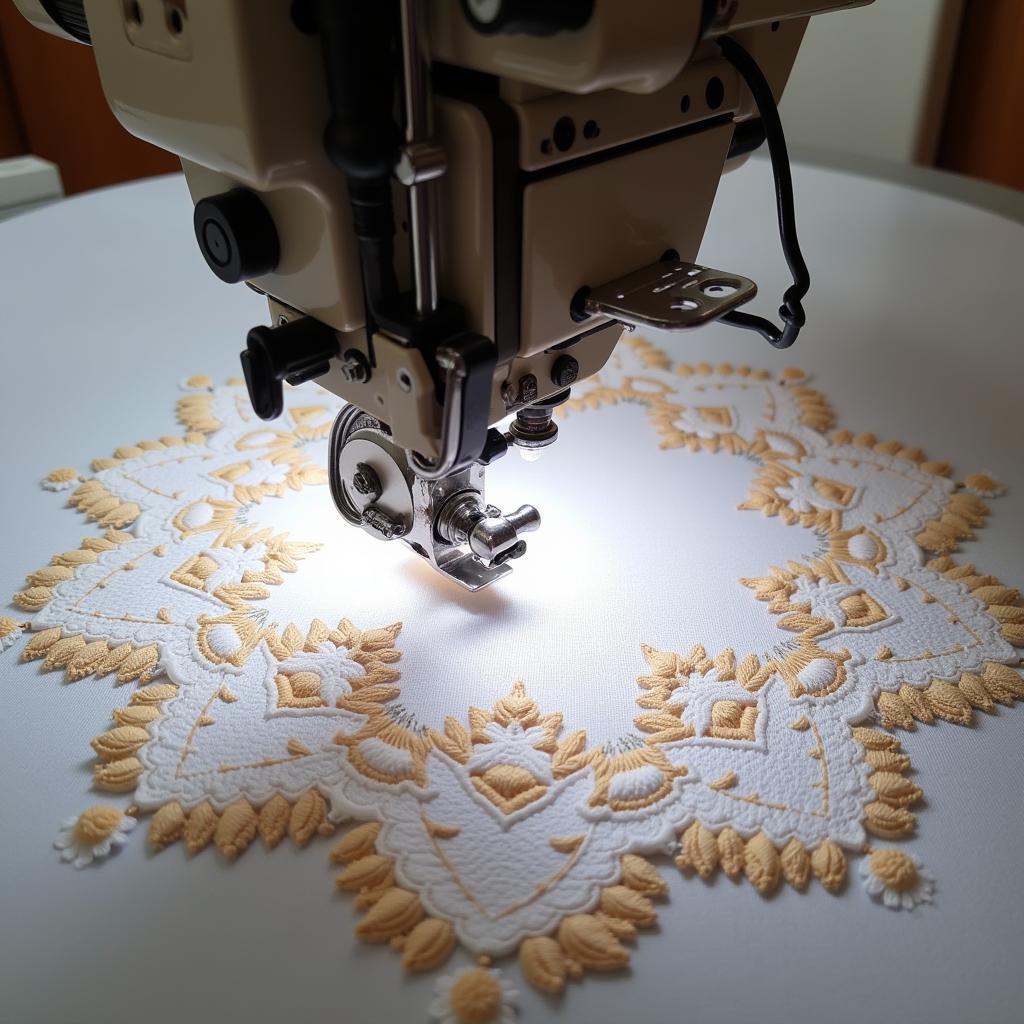Unveiling the Elegance of African George Lace
African George Lace, a vibrant and luxurious fabric, has become synonymous with elegance and sophistication across Africa and beyond. From traditional ceremonies to high-fashion runways, this exquisite textile tells a story of cultural heritage, artistic expression, and evolving fashion trends. Let’s delve into the captivating world of African George lace.
The History and Origins of African George Lace
Where did this opulent fabric originate? Though often associated with Africa, African George lace actually has its roots in Europe, specifically in Austria. Originally known as Wiener Spitze or Viennese lace, it was created using a complex process known as Schiffli embroidery. This intricate needlework produces the raised, textured patterns that characterize the fabric. Over time, this European lace made its way to West Africa, particularly to Nigeria, where it was quickly adopted and adapted, becoming a beloved symbol of status and celebration. It’s fascinating how a European textile evolved into a cornerstone of African fashion!
 Schiffli Embroidery Process for African George Lace
Schiffli Embroidery Process for African George Lace
African George Lace: A Symbol of Culture and Status
African George lace is more than just fabric; it represents heritage and tradition. In many West African countries, particularly Nigeria and Ghana, it is commonly worn for special occasions like weddings, chieftaincy ceremonies, and religious festivals. african lace blouse styles can be incorporated into a wide variety of clothing. Owning and wearing elaborate George lace outfits signifies wealth, prosperity, and social standing. It’s a powerful visual language, expressing identity and belonging.
What makes African George Lace so unique?
African George lace distinguishes itself through its unique characteristics: the rich, vibrant colors, the intricate and often symbolic patterns, and the heavy, luxurious feel of the material. These qualities make it ideal for creating elaborate and eye-catching garments.
From Traditional to Contemporary: The Evolution of African George Lace Styles
While rooted in tradition, African George lace continues to evolve. Contemporary designers are pushing creative boundaries, incorporating the fabric into modern silhouettes and fusion styles. This evolution has seen African George lace grace international runways and red carpets, gaining global recognition. We have seen impressive african football player of the year dressed in clothing made from this versatile fabric. Even the world of music has embraced the fabric, with several musicians featuring it in their music videos, further broadening its appeal.
How to care for your African George Lace?
Preserving the beauty of African George lace requires special care. Hand-washing is recommended to maintain the fabric’s intricate embroidery and vibrant colors. Avoid harsh detergents and direct sunlight when drying.
The Future of African George Lace
African George lace remains a powerful force in the fashion world. Its enduring appeal lies in its ability to seamlessly blend tradition with modernity. As the fabric continues to gain international recognition, we can expect to see even more innovative designs and creative expressions, ensuring that African George lace remains a symbol of elegance and cultural pride for generations to come. african american facts tell us that cultural exchange across continents has a long and rich history.
Conclusion
African George lace is more than just a fabric; it’s a symbol of African heritage, artistry, and evolving fashion. From its European origins to its current global presence, African George lace continues to captivate and inspire. Explore the beauty and richness of this exquisite textile and experience the elegance it brings.
FAQ
- What is African George lace made of? Typically, it’s made from cotton, silk, or rayon.
- How is African George lace different from other laces? Its distinctive raised embroidery and vibrant colors set it apart.
- Where can I buy authentic African George lace? Reputable fabric stores specializing in African textiles.
- Is African George lace expensive? The price varies depending on the quality and intricacy of the design.
- Can I wear African George lace for everyday occasions? While traditionally reserved for special events, modern styles have incorporated it into everyday wear.
- Are there different types of African George lace? Yes, variations exist based on the embroidery patterns and fabric composition.
- How can I tell if African George lace is authentic? Look for intricate, high-quality embroidery and rich, vibrant colors.
You might also be interested in learning about african american classical music composers or african american inventors and what they invented.
When you need support, please contact us by phone: +255768904061, email: [email protected], or visit our address: Mbarali DC Mawindi, Kangaga, Tanzania. We have a 24/7 customer service team.


